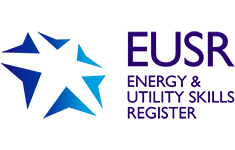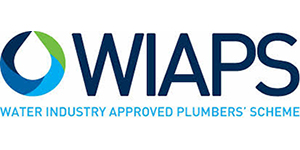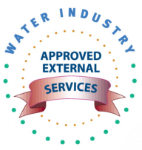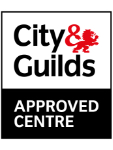Detecting pipe leaks is a crucial task for maintaining the integrity of plumbing systems, preventing water damage, and conserving water. Whether you’re a homeowner or a professional, understanding the various methods used to detect leaks can help you address issues promptly and effectively. This comprehensive guide explores the different techniques and tools available for detecting pipe leaks, offering insights into their applications and benefits.
The Importance of Leak Detection
Before diving into the methods, it’s essential to understand why leak detection is so important. Undetected leaks can lead to significant problems, including:
- Water Damage: Leaks can cause structural damage to buildings, leading to costly repairs.
- Increased Water Bills: Even small leaks can result in substantial water wastage, inflating your water bills.
- Mould and Mildew Growth: Persistent moisture from leaks can create an environment for mould and mildew, posing health risks.
- Environmental Impact: Wasting water through leaks is environmentally irresponsible, especially in areas facing water scarcity.
Given these potential issues, timely and accurate leak detection is vital.
Common Signs of Pipe Leaks
Before employing advanced detection methods, it’s useful to be aware of common signs indicating a potential leak:
- Unexplained Increase in Water Bills: A sudden spike in your water bill without a corresponding increase in usage.
- Damp or Discoloured Patches: On walls, ceilings, or floors, indicating water seepage.
- Mould or Mildew: Visible growth in areas that should be dry.
- Musty Smell: Persistent damp odour in certain areas of your home.
- Low Water Pressure: Inconsistent water flow or pressure.
Methods of Leak Detection
1. Visual Inspection
The simplest method of leak detection is a thorough visual inspection. Check all visible pipes, fixtures, and fittings for signs of leaks. Look for damp spots, corrosion, and dripping water. While this method is straightforward, it’s limited to detecting leaks in accessible areas.
2. Acoustic Leak Detection
Acoustic leak detection is a widely used method that involves listening for the sound of water escaping from pipes. Specialised equipment, such as ground microphones and listening discs, can amplify the sound of leaks. This technique is effective for detecting leaks in both water supply lines and pressurised systems.
Benefits:
- Non-invasive
- Can pinpoint the exact location of the leak
3. Infrared Thermography
Infrared thermography uses thermal imaging cameras to detect temperature variations caused by leaking water. This method is particularly useful for identifying leaks behind walls, under floors, and in ceilings.
Benefits:
- Non-destructive
- Can cover large areas quickly
4. Pressure Testing
Pressure testing involves increasing the pressure in the plumbing system and monitoring it for drops, which indicate a leak. This method is commonly used in new installations and renovations to ensure the system is leak-free.
Benefits:
- Highly accurate
- Can detect even small leaks
5. Electronic Leak Detectors
Electronic leak detectors use sensors to detect moisture and send out a signal when a leak is present. These detectors are often used in conjunction with other methods to confirm the presence of a leak.
Benefits:
- Highly sensitive
- Can be used in hard-to-reach areas
6. Dye Testing
Dye testing involves adding a coloured dye to the water supply and observing where it appears. This method is useful for detecting leaks in toilets, swimming pools, and other water-containing structures.
Benefits:
- Simple and inexpensive
- Effective for identifying the source of visible leaks
7. Tracer Gas Detection
Tracer gas detection involves introducing a safe, non-toxic gas into the plumbing system and using specialised equipment to detect its presence outside the pipes. This method is highly effective for pinpointing leaks in complex systems.
Benefits:
- Highly accurate
- Can detect leaks in underground and concealed pipes
Professional Leak Detection Services
While some leak detection methods can be performed by homeowners, others require specialised equipment and expertise. Professional leak detection services employ trained technicians who use advanced tools and techniques to locate and repair leaks efficiently. These services are invaluable for dealing with complex or severe leaks that are difficult to detect using DIY methods.
Preventative Measures
Preventing leaks is as important as detecting them. Regular maintenance and inspections can help identify potential issues before they become major problems. Consider the following preventative measures:
- Regular Inspections: Schedule periodic inspections of your plumbing system by a professional.
- Install Leak Detectors: Place electronic leak detectors in high-risk areas such as basements and bathrooms.
- Monitor Water Bills: Keep an eye on your water bills for any unexplained increases.
- Insulate Pipes: Insulate pipes in unheated areas to prevent freezing and subsequent leaks.
Conclusion
Detecting pipe leaks is a crucial aspect of maintaining a healthy and efficient plumbing system. By understanding the various methods and tools available, you can choose the most appropriate technique for your needs. Whether employing simple visual inspections or advanced technologies like infrared thermography and acoustic leak detection, timely leak detection can save you money, protect your property, and conserve water.
For complex or severe leaks, professional leak detection services offer expertise and advanced equipment to ensure effective resolution. Remember, proactive maintenance and regular inspections are key to preventing leaks and maintaining a reliable plumbing system.







